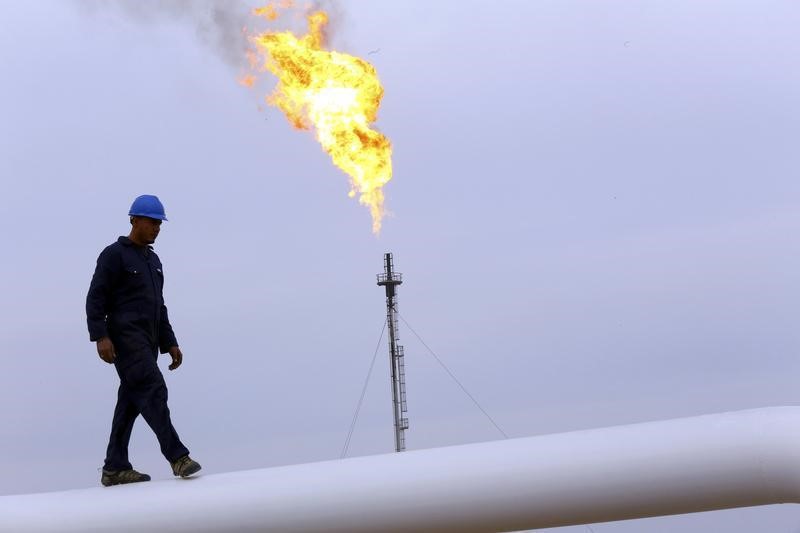By Barani Krishnan
Investing.com -- Oil prices continued their tumble Tuesday, nearing a one-year low and losing some 7% on the week, as fears mounted over the possibility of the Federal Reserve turning aggressive on interest rates again in the coming year as U.S. economic data suggested unrelenting pressure on inflation.
West Texas Intermediate, or WTI, crude for January delivery was down $3.23, or 4.2%, to $73.70 per barrel by 13:18 ET (18:18 GMT). It sank to $73.52 earlier — its lowest since Dec. 27. Week-to-date, WTI was down 7.4%.
London-traded Brent crude for February was down $3.63, or 4.4%, to $79.05. It hit a session low of $78.86 earlier, a bottom not seen since Jan. 4. Brent was down 6.7% on the week.
The slide in crude prices came as traders appeared to embrace the notion there would be no severe supply disruptions in the near term despite the European Union’s so-called ban on Russian oil and Moscow’s noisy protests against the price cap on its crude by the West.
“It’s all shadow boxing, if you ask me, what Russia and the EU are doing on the so-called ban and price cap on Russian oil,” said John Kilduff, founding partner at New York energy hedge fund Again Capital. “Neither side is really doing anything to hurt the movement of oil in the market. It’s all talk and no real action. In light of that, the market figures all is fine for now despite Russia and OPEC trying to scare everyone with talk of a supply squeeze.”
The European Union officially stopped importing oil directly from Russia as of December 5. Simultaneously, a price cap of $60 per barrel on Russian crude came into effect on Monday. Both measures are aimed at punishing Russia for its war against Ukraine and creating a cash crunch for Moscow, which relies heavily on earnings from oil and gas for spending in almost everything.
Under the price cap, non-EU nations importing seaborne Russian crude cannot get shipping, insurance and reinsurance services from established Western companies in the business if they pay more than $60 per barrel. That could complicate the shipment of Russian crude priced above the cap, even to countries which are not part of the agreement. Russian Urals crude traded at around $67 a barrel on Friday.
The Kremlin has vowed not to do business with any country that tries to apply the price cap on Russian oil. But industry experts said it might not be entirely possible for Moscow to escape Western shipping and financial services that were tied to the price cap.
Kremlin spokesman Dmitry Peskov reiterated on Monday that Russia “will not accept" any price cap on its oil and was analyzing how to respond. The West’s action would destabilize global energy markets but not affect Moscow’s ability to sustain what it calls its "special military operation" in Ukraine, Peskov added.
But other than talk so far, the Russians haven’t done anything in retaliation.
OPEC+, on its end, left production by the 23 oil producers in its alliance unchanged when the group met on Sunday — presumably in anticipation of a severe crude supply squeeze in Europe should the Kremlin retaliate against the West’s price cap.
OPEC+ — which represents the 13-member Saudi-led Organization of the Petroleum Exporting Countries and 10 other oil producers steered by Russia — had announced in October a 2 million-barrels-per-day reduction that is to last through 2023.
But it has become a habit for oil bulls to expect OPEC+ to announce a production cut each time the group meets. Since Sunday’s meeting yielded nothing, crude prices unsurprisingly fell.
Crude traders have also been affected since Monday by macro developments in risk markets as the dollar rallied this week after orders for U.S. factory-made goods rose 1% in October. It was the 12th increase in 13 months for factory orders versus manufacturing, which contracted in November for the first time in 2-1/2 years, according to a measure by the Institute for Supply Management (ISM).
Separately, the ISM-tracked services sector showed a reading of 56.5 in November on Monday, versus 54.4 in October. Economists had predicted a reading of 53.3 for last month.
The economic data meant one thing: the Fed could turn aggressive with rate hikes again in the new year.
“The thinking is that we might not be at the peak of U.S. rates after all,” economist Adam Button said in a post on the ForexLive forum. “For sure the Fed is going to pause at some point next year around 5% but if the numbers keep running hot like this, they won't pause for long. The worry is that 5% rates aren't going to be enough and the Fed will eventually have to hike to 6-7% (or higher). The issue is that we don't really know how the U.S. economy will react to those rates then. It's been so long since the U.S. has had genuinely high rates that it's a tough call.”
The Fed has added 375 basis points to rates since March. Prior to that, rates peaked at just 25 basis points, as the central bank slashed them to nearly zero after the global outbreak of the coronavirus pandemic in March 2020.
After four straight jumbo-sized hikes of 75 basis points between June and November, markets expect the Fed to impose a smaller increase of 50 basis points at its upcoming rate decision on Dec. 14.
